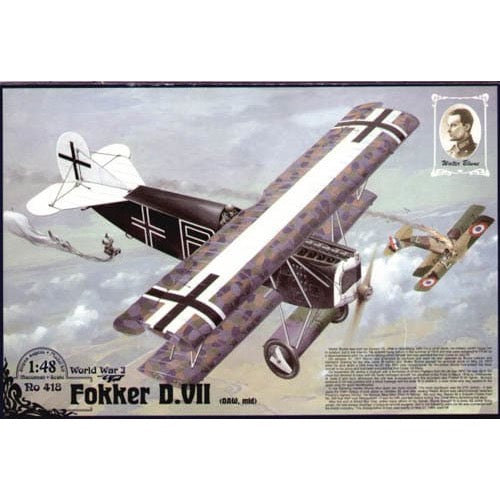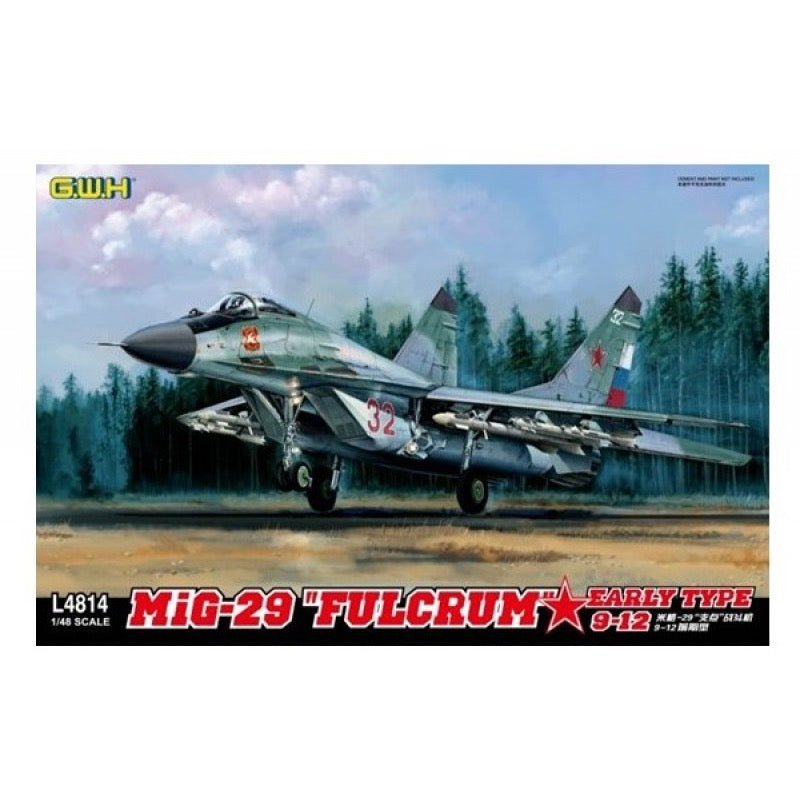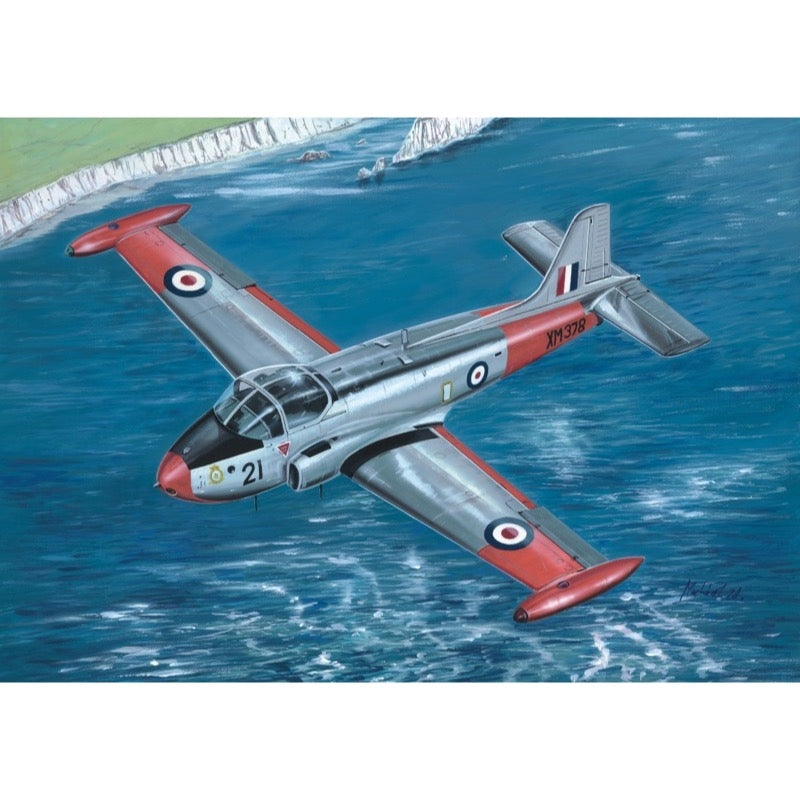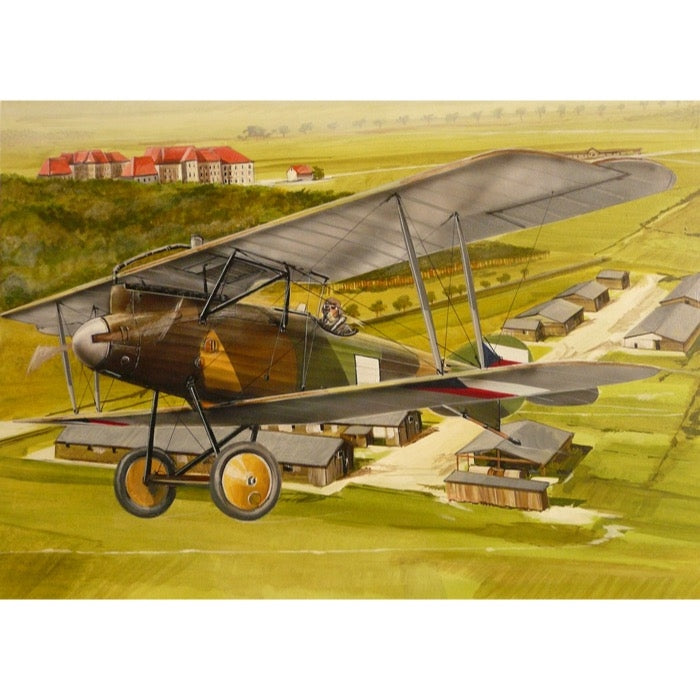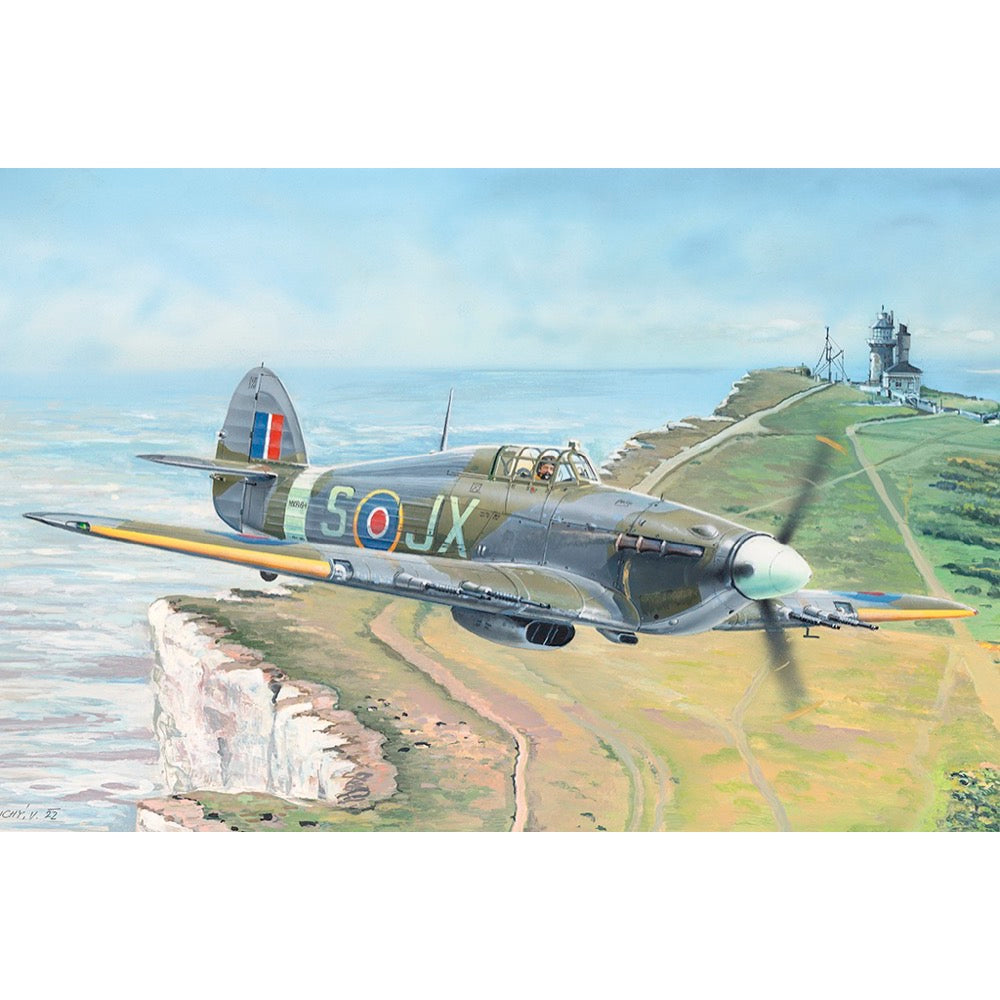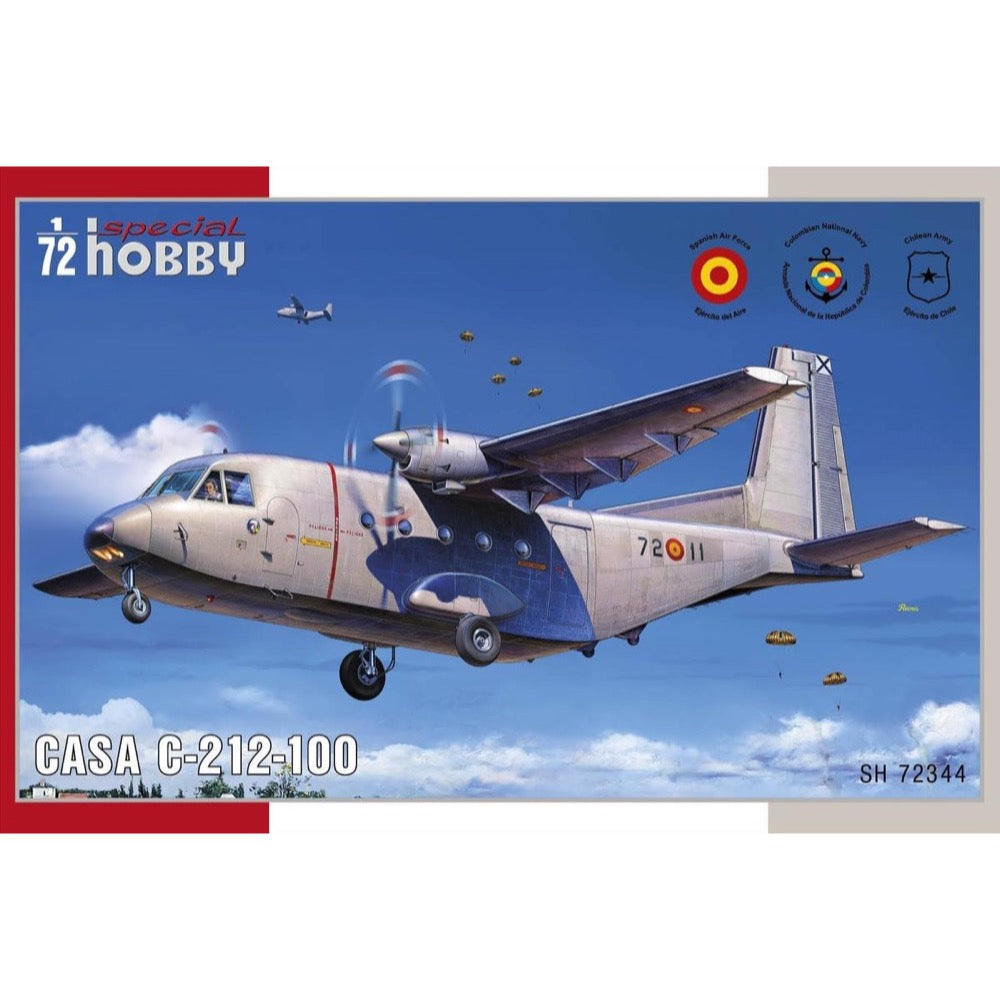
Special Hobby SH72093 1/72 PV-2 Harpoon*
22.00
$
<ui>
<li>Weight : 0.3 kg </li>
<li>Edition : Special Hobby</li>
<li>Product : Plastic kits</li>
<li>Scale : 1/72</li>
<li>Type : Aircraft</li>
</ui>
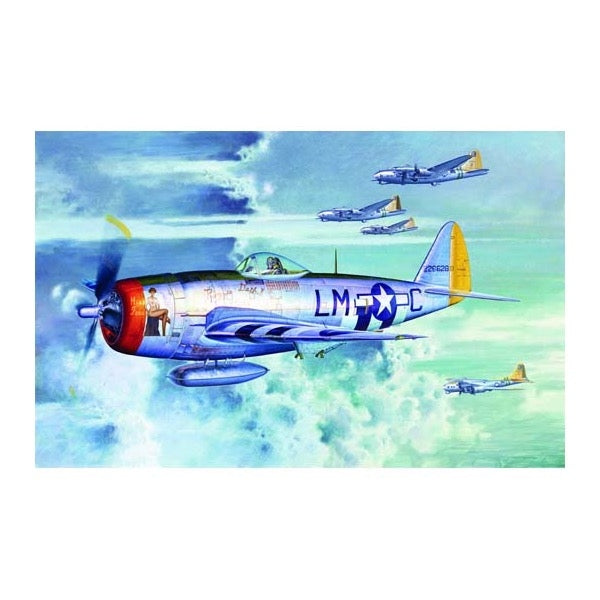
Trumpeter 02263 1/32 P-47D Thunderbolt
37.00
$
<p>Affectionately know as "the Jug", the P-47 was a heavy (7-ton) fighter for its time. Designed as an interceptor, it found its true role as a hard-hitting ground-attack aircraft. Its great structural strength and massive radial engine that could withstand damage better than that of in-line engine fighters like the p-51and p-38helped it survive the punishment. In March, 1942, the first production models started coming out the assembly line, and in January, 1943, the 56th Fighter Group was the first to make the new fighter operational, with the 8th Air Force based in Great Britain. Production really hit its stride with the P-47D, which was the largest series. The P-47D had a more powerful engine at high altitude and a heavier bomb load. With drop tanks the P-47 could escort bombers as far as Berlin, These Thunderbolts were built in several production lots and with a host of designations. </p>
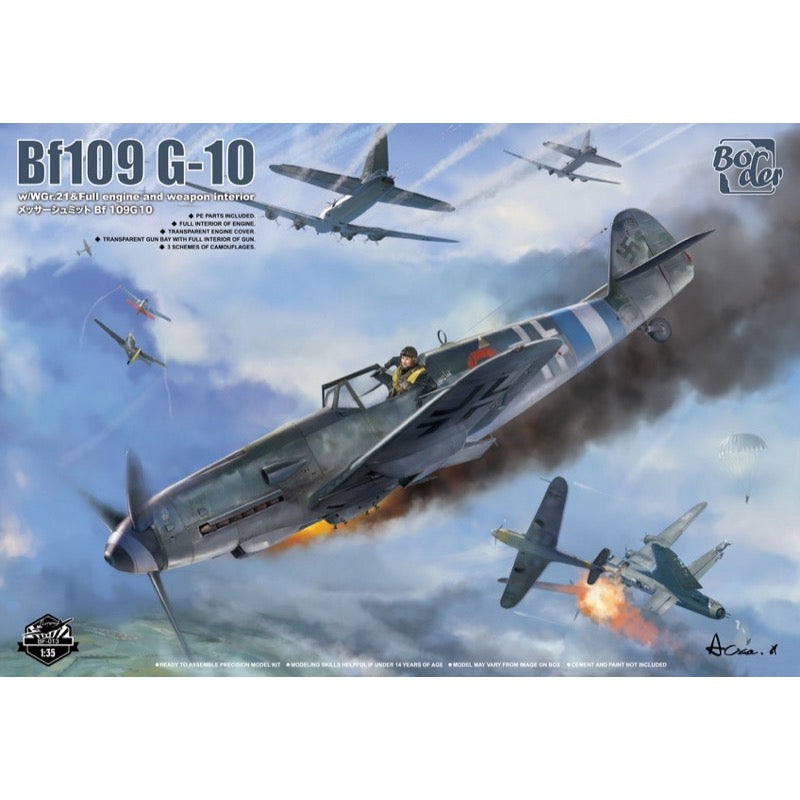
Border Models BF-013 1/35 Messerschmitt Bf-109G-10
44.00
$
<p>Border Models' 1/35-scale model kit of the Messerschmitt Bf109 G-10 comes with newly molded parts! It features the WGr.21 rocket launcher, a full engine, and a weapon with a fully detailed interior; photo-etched parts are included, as are decals for three versions. Clear parts are included for the engine cover, canopy, and machine gun inspection door.</p>
<h3>Features</h3>
<ul>
<li>PE Parts included</li>
<li>Full interior of Engine</li>
<li>Transparent engine cover</li>
<li>Transparent gun bay with full interior of gun</li>
<li>3 Scehems of camouplages</li>
</ul>

Trumpeter 02825 1/48 PLAAF JJ-7A Trainer
20.00
$
<p>The JJ-7 is generall based on the J-7B fighter design, with the single-seat cockpit replaced by a tandem two-seat cockpit. The student pilot sits in the front seat and the trainer sits in the rear seat. The original single under-fuselage vertical stabilising fin of the J-7 is replaced by a two-fin design. As a result of the additional seat, the internal fuel tank capacity of the JJ-7 is smaller than that of the J-7B. An additional fuel tank is added on the back of the fuselage between the cockpit canopy and vertical tail. The single rear-hinged cockpit canopy of the J-7 is replaced by two side-hinged (open to right) canopies.</p>
<h3>Features</h3>
<ul>
<li>
<p>The kit consists of over 170 parts</p>
</li>
<li>
<p>Fuselage & wing with finely engraved panel lines</p>
</li>
<li>
<p>Photo Etched parts included</p>
</li>
<li>
<p>3D printed pilot seat & main gears</p>
</li>
</ul>
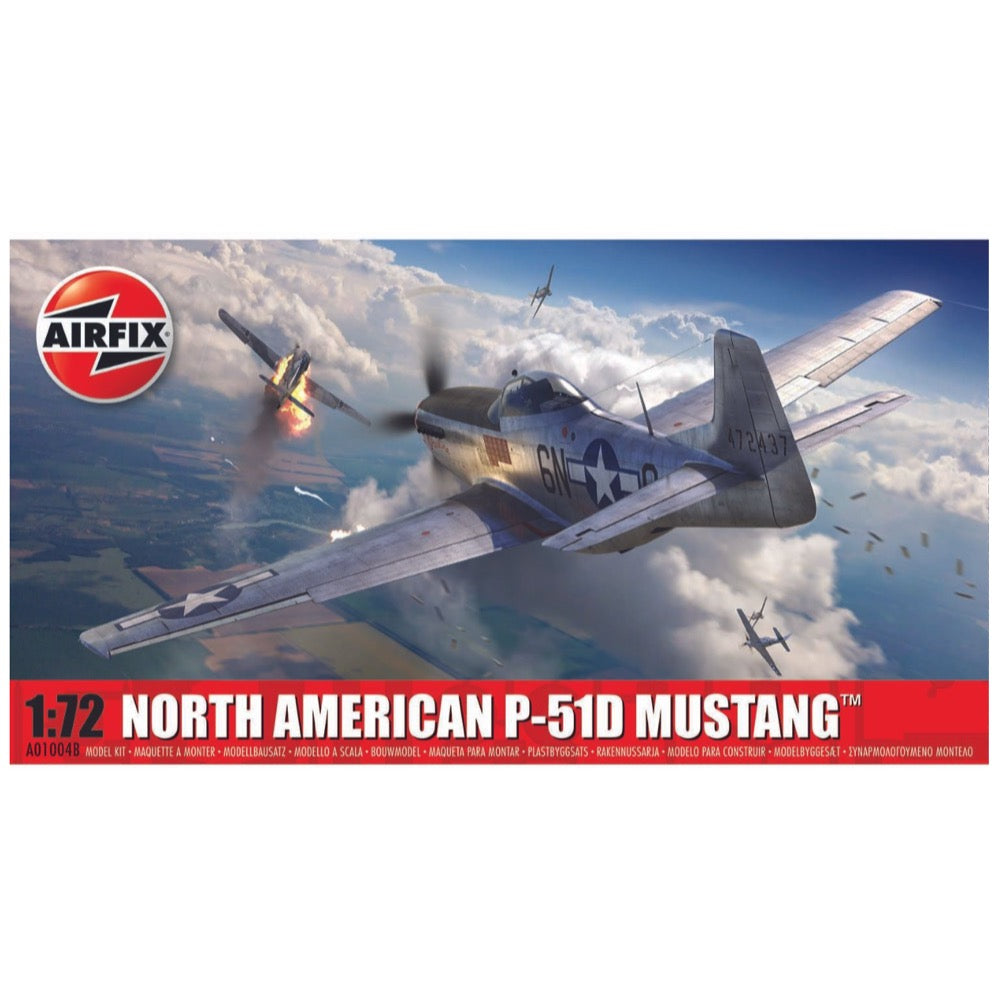
Airfix 01004B 1/72 North-American P-51D Mustang
8.00
$
<p>The North American P51 Mustang is viewed as one of the iconic American fighters of the Second World War. Designed to an RAF specification, the Mustang was transformed once the Rolls Royce Merlin engine was installed.</p><p>Its long range and excellent firepower made it a superb escort fighter, able to protect the bombers all the way to Berlin and back. After the war, the P51 saw service in Korea and was used by some air arms up until the early 1980s.</p><h3>Specifications</h3><ul>
<li>Item Length - Without Packaging (cm): 13.6</li>
<li>Item Height - Without Packaging (cm): 5.67</li>
<li>Item Width - Without Packaging (cm): 15.7</li>
<li>How many pieces will be found in the box opened by the customer?: 53</li>
<li>Item Scale: 1:72</li>
<li>License line: Produced under licensed. (Vehicle/Aeroplane Models) the distinctive logos, product markings, and trade dress are all trademarks of The Boeing Company.</li>
<li>Contents (what's in the box) sets: Plastic model kit, instruction sheet, paint layout sheet and decals.</li>
<li>Finish: Plastic</li>
<li>Number of Scheme options: 1</li>
<li>Skill Level: 1</li>
<li>Flying Hours: 1</li>
<li>Wingspan (mm): 157</li>
</ul>
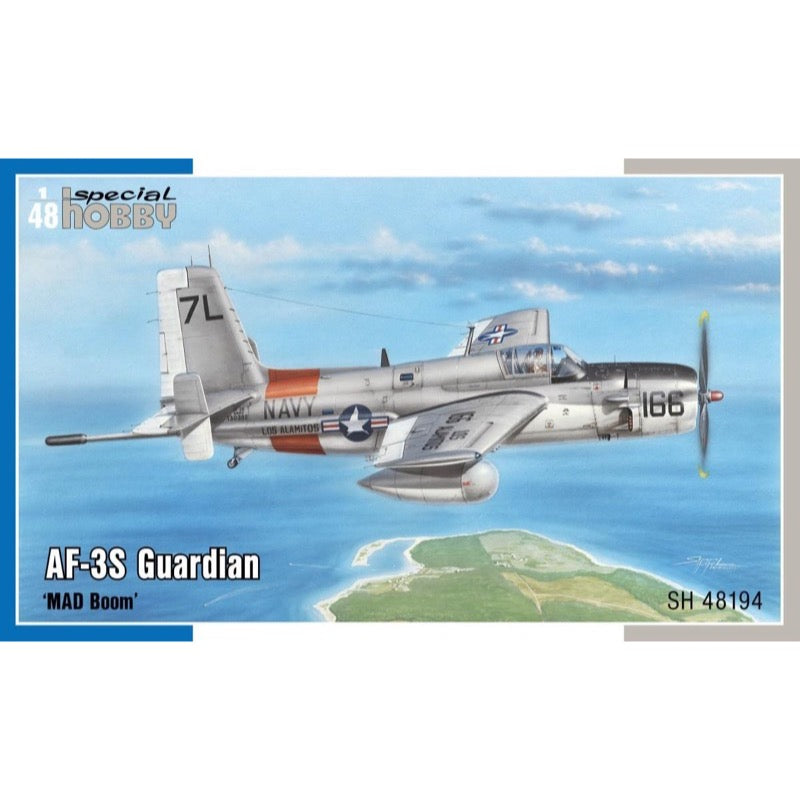
Special Hobby SH48194 1/48 Grumman AF-3S Guardian
40.00
$
<p><strong>AF-3S Guardian 1/48</strong></p>
<p>During the 1950s, the AF-2 Guardian anti-submarine aircraft were operating from the US Navy carriers in so-called Hunter-Killer pairs which consisted of one machine of the AF-2W version performing the Hunter role using its volumous, belly-mounted AP-20 search and early-warning radar to locate enemy’s submarines while the other member of the team was an AF-2S which was the Killer, carrying a variety of offensive anti-submarine weapons, such as torpedoes, depth charges or rockets in the bomb bay or beneath its wings.</p>
<p>The development of the Guardian began during WW2 although the original request from the US Navy had been for a torpedo-bomber. At Grumman, this project was known under G-70 designation, while the Navy recognized it as the XTB3F. This new type was to be propelled by a P&W R-2800 radial engine driving a four-bladed propeller in the nose and a Westinghouse 19XB jet engine mounted in the tail section. The Westinghouse jet was later removed from the specifications, yet before the prototype’s maiden flight, which took place on 19th December 1945. By this time the torpedo bomber role had already been outdated and the Navy asked for the type to be rebuilt into the two above mentioned versions.</p>
<p>The prototype AF-2 (which was the radar-equipped Hunter version) first flew in November 1948 while the AF-2S performed its first flight in January the following year. A year later, the type entered service with the US Navy, later to be joined by a third version, the AF-3S which was basically a AF-2S with a magnetic anomaly detector fitted. The AF-3s were operated both from land bases and aircraft carriers. During the Korea War, the type was used to defend US Navy vessels in the combat zone.</p>
<p>The Guardian was removed from front line service in 1955, remained just with US Naval Reserve units up to 1957. The type became the very first US Navy carrier-based aircraft to be specially built for anti-submarine warfare. It also holds the record for being the largest single-engined, piston-engined aircraft ever to be flown from the US Navy carriers.</p>
<p>Our model of the final, attack version of the Guardian consists of as many as eight styrene runners, one clear sprue, a set of resin parts and a photo-ethed fret. The new AF-3S sprue contains also a new set of mainwheels with the correct number of slots in the hubs and an enlarged stbd wing pod housing more efficient radar to that used in the AF-2S version. The decal sheet caters for four machines, two of which were painted in blue overall per regulations issued later in the war. The VS-20 machine was operated in 1953, at first from NAS Atsugi in Japan, later from aircraft carrier USS Bagoeng Strait. The other blue Guardian belonged to VS-27 and flew from CVS-36 USS Antietam in the Mediterranean in 1953. AF-3Ss machines remained in service with reserve units long enough to receive the new Gray-White scheme, the other two Guardians in our kit offers this scheme as worn by NAS Los Alamitos based machines, the scheme is also accompanied by orange fuselage bands which were used to mark training machines.</p>


